What Exactly Are Ofrendas, and How Are They Related to Día de Los Muertos?
While we all know what Halloween is, there are so many other ways that people around the world celebrate the season surrounding October 31. One of those ways is with the Mexican holiday, Día de los Muertos (Day of the Dead). It’s a holiday full of beautiful traditions, family and celebration of lives we’ve lost. Among those traditions is the ofrenda, an altar placed in people’s homes during Día de los Muertos.
An ofrenda is a dedicated space in your house to remember and honor deceased family members and can be as intricate or as simple as you want it to be. The concept may be somewhat familiar for those who have seen Disney's Coco (though the movie does turn the belief around the holiday into a bit of a fantasy). But if you’ve ever wondered what the traditional ofrenda signifies or looks like, or if you want to know more about how to set one up respectfully, we’ve got you covered.
Related: What Is the Day of the Dead? And How Is It Different From Halloween?
What is the purpose of an ofrenda?
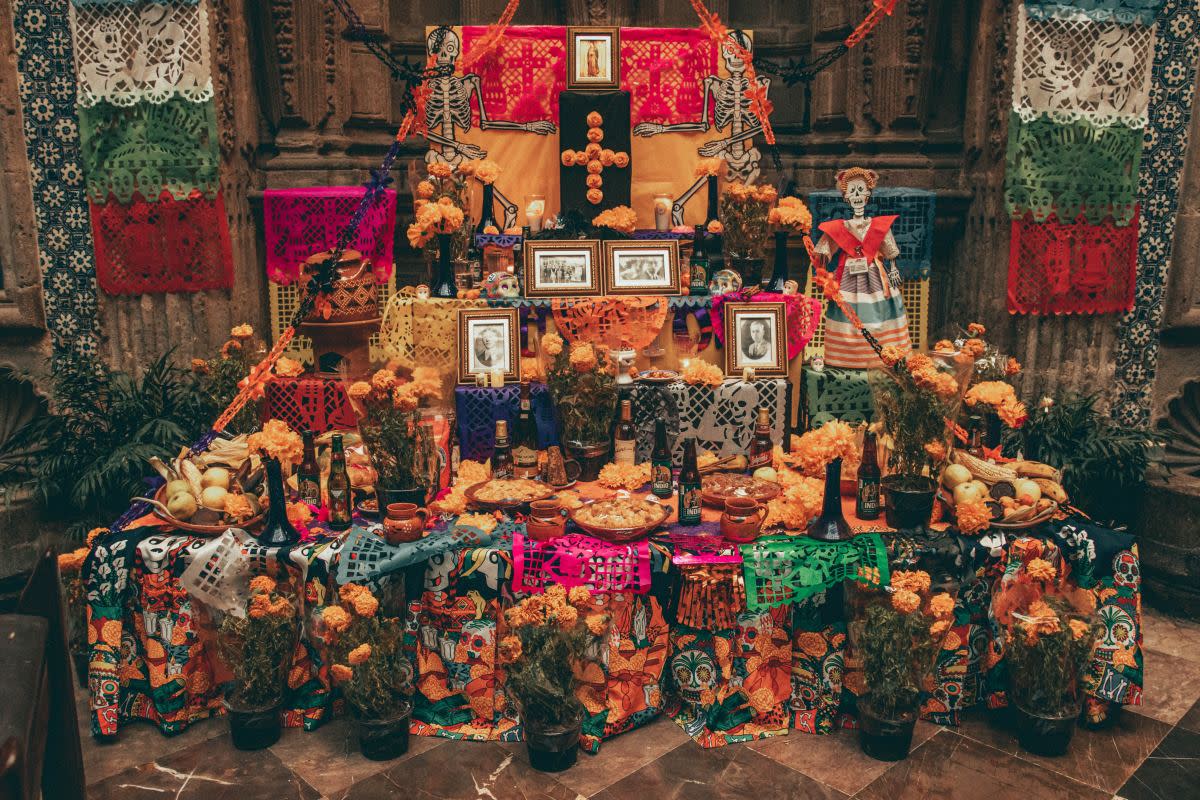
Roger Ce/Unsplash
Día de los Muertos, or Day of the Dead in English, is a time to remember deceased relatives and loved ones. As stated above, the holiday is a largely Mexican tradition but it’s celebrated a little differently depending on what part of the country you’re in or from.
For example, Día de los Muertos is officially observed on November 1 and 2, but some start on October 31 and even go until November 6 (more on that later). But one of the most universal parts of the holiday is the creation of an ofrenda.
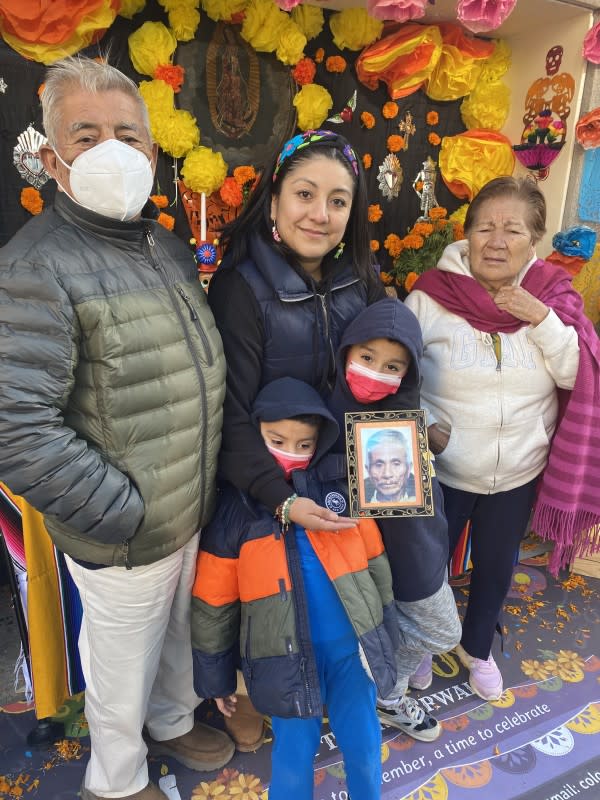
Courtesy of Erika Espinosa
Ofrenda means “offering” in English and it’s an altar that families create in their homes, or even at cemeteries or other public spaces like churches. Cesáreo Moreno, the Visual Arts Director and Chief Curator at the National Museum of Mexican Art (NMMA) in Chicago, Illinois, told Parade how the ofrenda is a way of sending someone off as much as it is celebrating them.
“It really is this beautiful way of letting go,” Moreno says. “It's this beautiful way of grieving, understanding that death is a part of life. And that it's something that's universal… You might as well accept it or celebrate it. Because it's gonna happen.”

Erika Espinosa—co-founder and co-owner of Colores Mexicanos, a Mexican gift shop located on Michigan Ave. in Chicago, Illinois (full of art, goods and more straight from Mexico)—explained to Parade that Día de los Muertos is a beautiful way to celebrate the dead instead of focusing solely on the deep sadness that can often accompany death. And the ofrenda is a great way to honor those who have passed.
“This is like a fiesta, it’s a special day,” Espinosa says. “When you are offering everything that your loved one loves. So you are waiting [for] them with all the special things.”
What are the four elements of an ofrenda?
An ofrenda doesn’t have to be elaborate or contain a ton of items, but it should have, at the very least, things that symbolize the four elements. These are earth, fire, air and water. Typically, this can be represented by:
Food (earth)
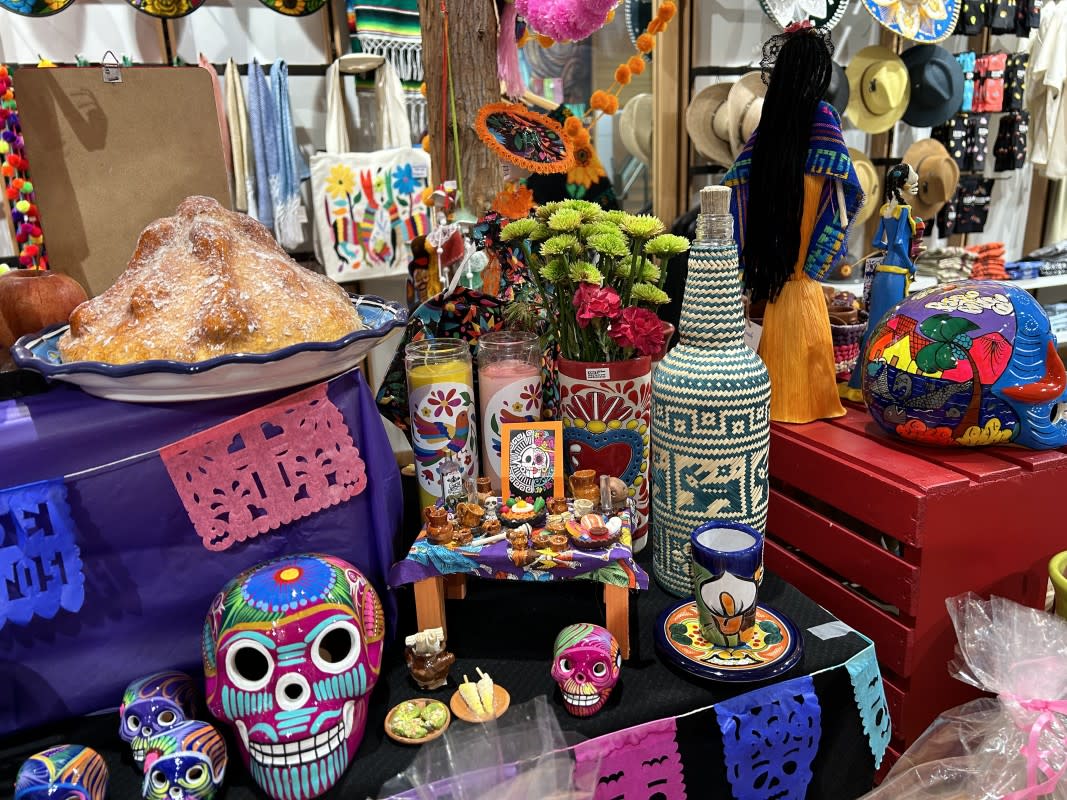
Alani Vargas/Parade
Since food can be grown in the earth or come from animals on the earth, food is a great way to symbolize this element. Since your ofrenda is honoring someone you love, you can feature their favorite foods—but traditional foods include tamales, chicken and mole.
Pan de muerto (Day of the Dead bread) and fruit like oranges or bananas are also really common. Mexicans also love leaving out mezcal or cerveza (beer)—especially if their loved one liked drinking it. It is a fiesta, after all.
Velas/Candles (fire)
Candles (velas in Spanish) of course represent fire and are all over ofrendas. Espinosa explained that the fire also symbolizes the love of your deceased family members, burning bright.
Papel picado (air)

Alani Vargas/Parade
Papel picado is a traditional Mexican decoration that uses thin, tissue paper that people cut designs and art into. Papel picado literally translates to “chopped paper” or “pecked paper” and because it’s so thin and blows in the wind, it is a great representation of air.
Water
The fourth element of water is easily symbolized by a cup of water. You should replace the cup of water every day because your deceased loved ones are thought to come to your altar very thirsty, so they should always have a fresh cup waiting for them. The same goes for the food.
What are other important items you can put on your ofrenda?
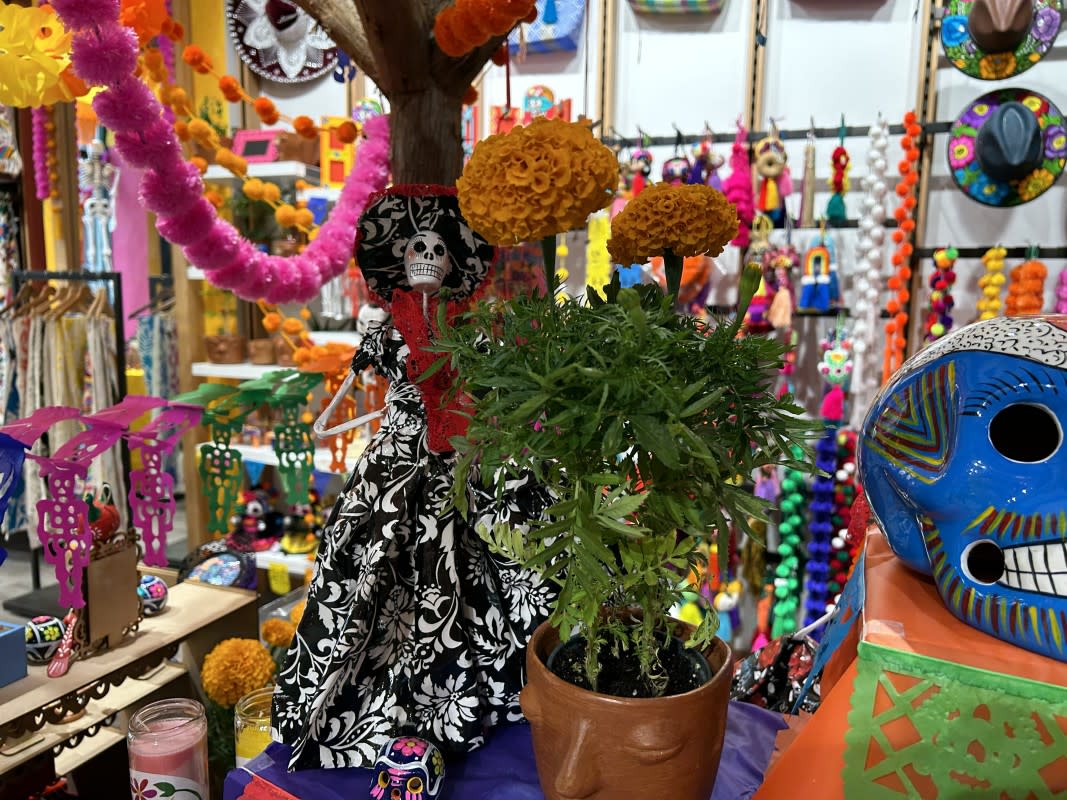
Alani Vargas/Parade
Outside of the four elements, there are other items that can typically go on an ofrenda.
Calaveras de azúcar, sugar skulls, are a pretty popular one. The National Museum of Mexican Art has an annual Día de los Muertos art exhibit, and Mexican artist Alejandro García Nelo created large calaveras made with cartonería, a papier-mache material that is used in sculptures traditionally handcrafted in Mexico. His ofrenda art piece, titled “54,950 heartbeats,” is the first ofrenda in the exhibit and is a tribute to the victims of the earthquakes in Turkey, Syria and Morocco. (You can see it in the video below.)
Flowers are another item found on ofrendas. Espinosa explains that it’s custom to leave a trail of flowers, typically marigolds, from the front door of your house to wherever the ofrenda is, because it shows the way for dead relatives.
Flowers also usually make an arc above the ofrenda, which symbolizes the way or process from life to death, per Espinosa. And the reason marigolds—cempasúchil—are typical flowers used on ofrendas is because it’s a traditional flower in Mexico and the bright color and scent help relatives find their way to the ofrenda (this is why incense is a common item on the altar as well).
Speaking of colors, in general, orange and yellow are important colors for their brightness. And purple is for el luto (or mourning).
A plate of salt is also common on ofrendas, even using it to create a cross of salt. In many cultures, salt is seen as a protective or purifying element. Plus, for Mexicans, it helps season the food you leave for your relatives as well.
Lastly, and one of the most important aspects of any ofrenda, are pictures of your deceased relatives.
“The picture in the altar is super important because we thought that if you don't put the picture on the altar or ofrenda, your relative is not invited, so they can’t come,” Espinosa explains. “If they don't see their picture, they can’t come to your altar.” She says that even if your altar is dedicated to them, they believe that a picture is important to bring them home. Of course, they don’t really know, but they “prefer to just place” a picture there, just in case. You wouldn’t want to accidentally exclude your loved ones!
In addition to the elements an ofrenda should have, it should also have levels to it. Seven levels is the most traditional, according to Espinosa, but two or three are also now common. The levels represent the sky, the earth, and the inframundo (AKA the underworld).
When do you put up an ofrenda?
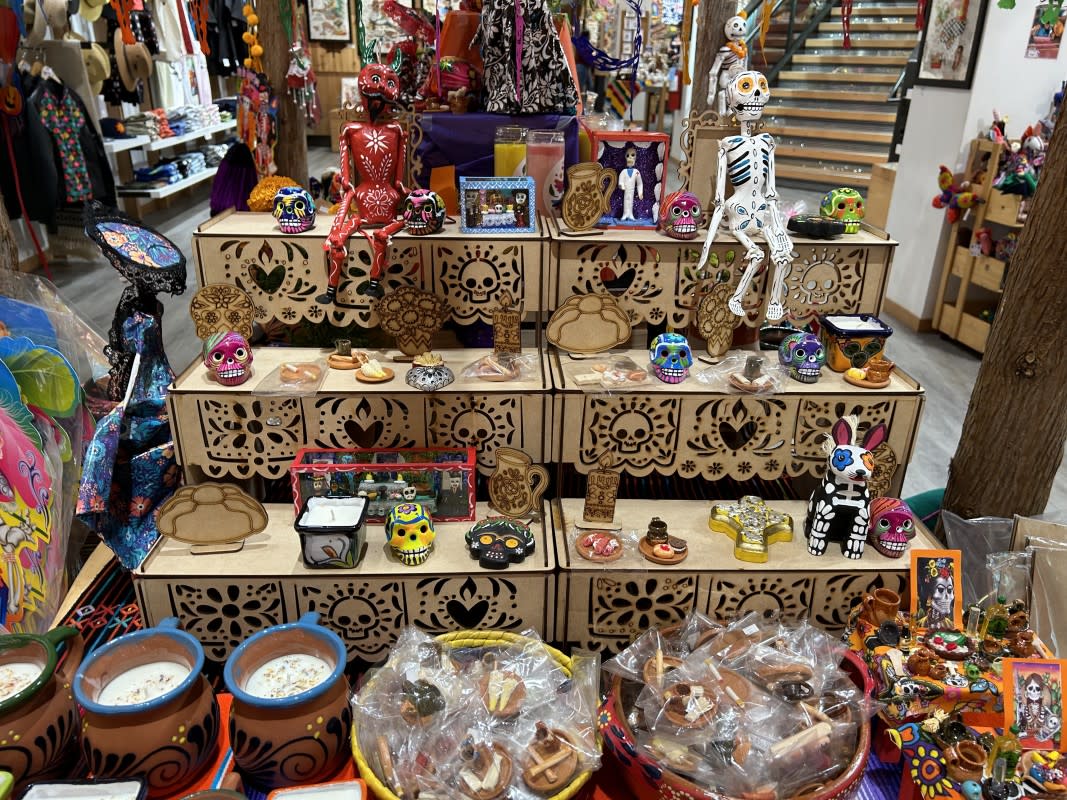
Alani Vargas/Parade
And as for when you’re supposed to set this all up, typically, Mexican families put their ofrenda up the week of Día de los Muertos and take them down right after the holiday ends. Of course, this is all personal preference, but that’s typically the custom.
As for the days of the holiday, Día de los Muertos is officially on November 1 and 2, but different parts of Mexico start or stop celebrating on different days.
Espinosa and her family, who are from Oaxaca, celebrate from Oct. 31 through Nov. 2, with each day relegated to a different form of dying. She explained that Oct. 31 is offered for all the children who died without baptism, Nov. 1 is for all the kids who’ve died and Nov. 2 is for all the adults.
Do all Mexicans celebrate Día de los Muertos the same way?
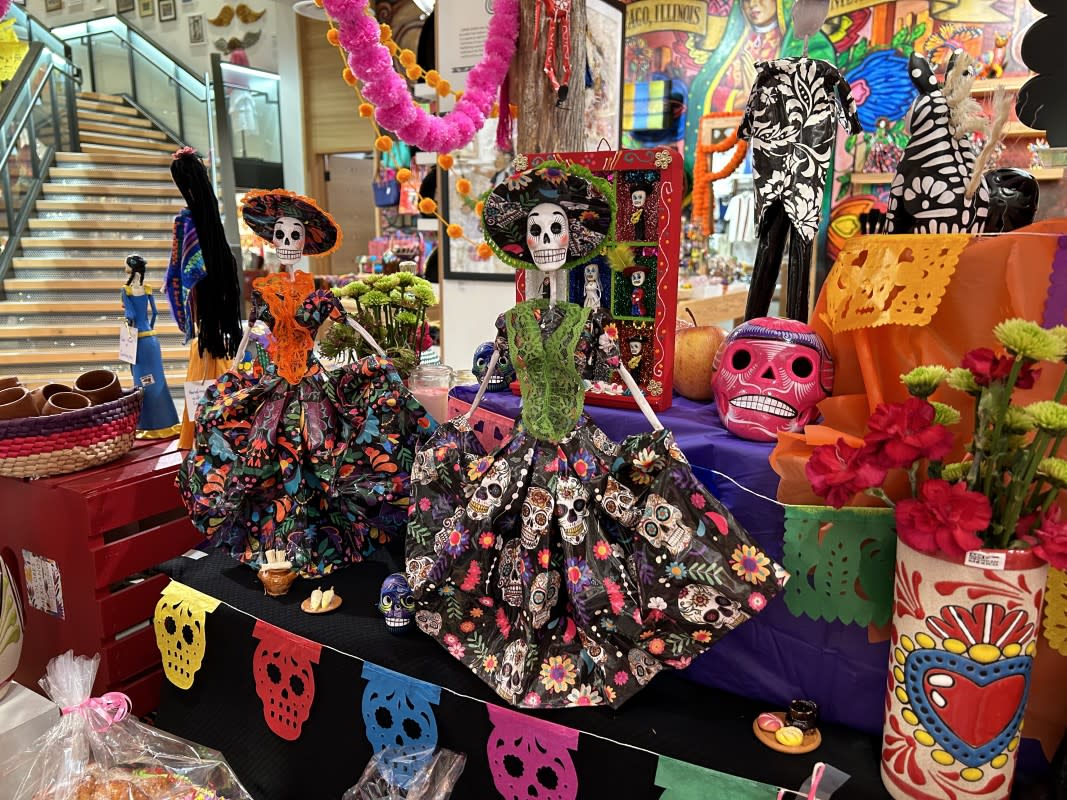
Alani Vargas/Parade
And on that note, not all Mexicans celebrate Día de los Muertos the same way. Moreno explained that every town, place and region in Mexico has their own traditions based on many things from colonization and immigration of other cultures.
For example, one ofrenda in the NMMA’s 2023 exhibit was created by Joan Sebastian Ku Canul, someone native to Quintana Roo, located near the Yucatán Peninsula (seen in the video below). Moreno explains that they try to have at least one ofrenda every year created in the tradition of different areas of Mexico from someone of that region (and they don’t have to be an artist).
“The Maya culture permeates everything in that part of Mexico,” Moreno says. “And so this ofrenda is very much a part of the Maya tradition. Whether it's the specific fruits or the specific way that they put the candles, the cross that they make with lye.”
A painting by an artist from Costa Chica also depicts a unique Day of the Dead tradition native to that part of Mexico. It’s called the Danza de los Diablos, and comes from the African presence in Costa Chica, Guerrero and Oaxaca. The dance starts at the cemetery, and the dancers “awaken the spirits” as they stop at each home along their route.
What are the origins of the ofrenda?
With cultural influences taken from ancient traditions and cultures, and with intense spiritual and mystical aspects, Día de los Muertos is not rooted in Catholicism. However, if you notice, a lot of Mexicans are very religious—either in Catholicism or Christianity in general—and incorporate a lot of Christian symbolism like crosses, saints and more.
So how did the holiday and ofrendas come to be this way? The answer has to do with colonialism.

Alani Vargas/Parade
As National Geographic reported, the holiday itself started thousands of years ago with the Aztec, Toltec and Nahua people, among other indigenous people. This is where the concept of souls returning to earth came from which we see in modern-day Día de los Muertos traditions and beliefs.
“When we were colonized, we had a period of time where we couldn't celebrate Día de los Muertos like the Aztecs used to do,” Espinosa explained. “After the colonization, we started to do it again but with changes because it was like a combination now [of Catholicism and Aztec tradition].”
This is also why the holiday is now celebrated around the Catholic All Saints and All Souls Day feast days, instead of in the summer when it used to be celebrated, per the Smithsonian American Art Museum.
Do you eat the food after it’s put on the ofrenda?
This might seem like a silly question, but it is a very valid thought. If people cook real food and put it on the ofrenda, since the spirits aren’t eating the physical form of it, what happens to the food afterward?
Raquel Aguiñaga-Martínez, the Registrar at the NMMA who also helped translate our conversation with Nelo, shared that she’s been to parts of Mexico where they give her items from the ofrenda to take home after she’s visited, like bushels of bananas.
“They’ll take it and they’re like, ‘Here’... Because you’re part of the celebration,” Aguiñaga-Martínez says.
But just as we said with other aspects of the holiday, this varies from region to region in Mexico. Obviously, if it’s something that was cooked and sitting out, it’s not eaten afterward because it’s not good anymore. But Nelo also said that he’s eaten apples from ofrendas before too, and Aguiñaga-Martínez notes that oftentimes there will be fresh tamales on the side for the living to enjoy as well.
Can anyone make an ofrenda?
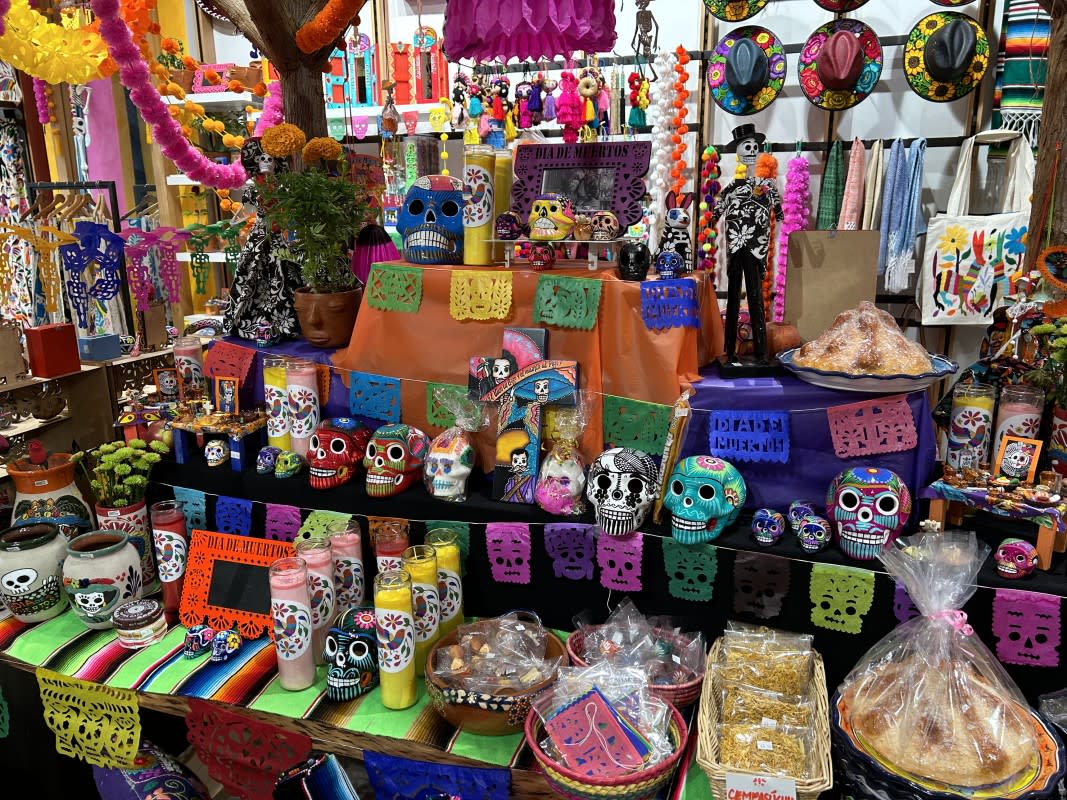
Alani Vargas/Parade
While anything that has to do with cultures other than your own should be dealt with with the utmost respect, a lot of Mexicans believe that ofrendas are something everyone can partake in. Espinosa did note that there are questions about cultural appropriation, but that she has no problem with people respectfully making their own ofrendas celebrating the dead in this beautiful way. With her store, Colores Mexicanos—which is the only Mexican shop on the popular Mag Mile in Chicago and makes a lot of Latinx visitors happy because of its existence—Espinosa wants to show people from all parts of the world their tradition and she welcomes it as a tradition for everyone.
“We encourage them to do it. Because as I say, it's a nice tradition and everybody can do it,” she said about European or white customers who come in asking about making their first ofrenda. “A lot of people thought that maybe it's like cultural appropriation. But for us, it's not. Because we love that everybody can enjoy that part of Mexican tradition. And people love it.”
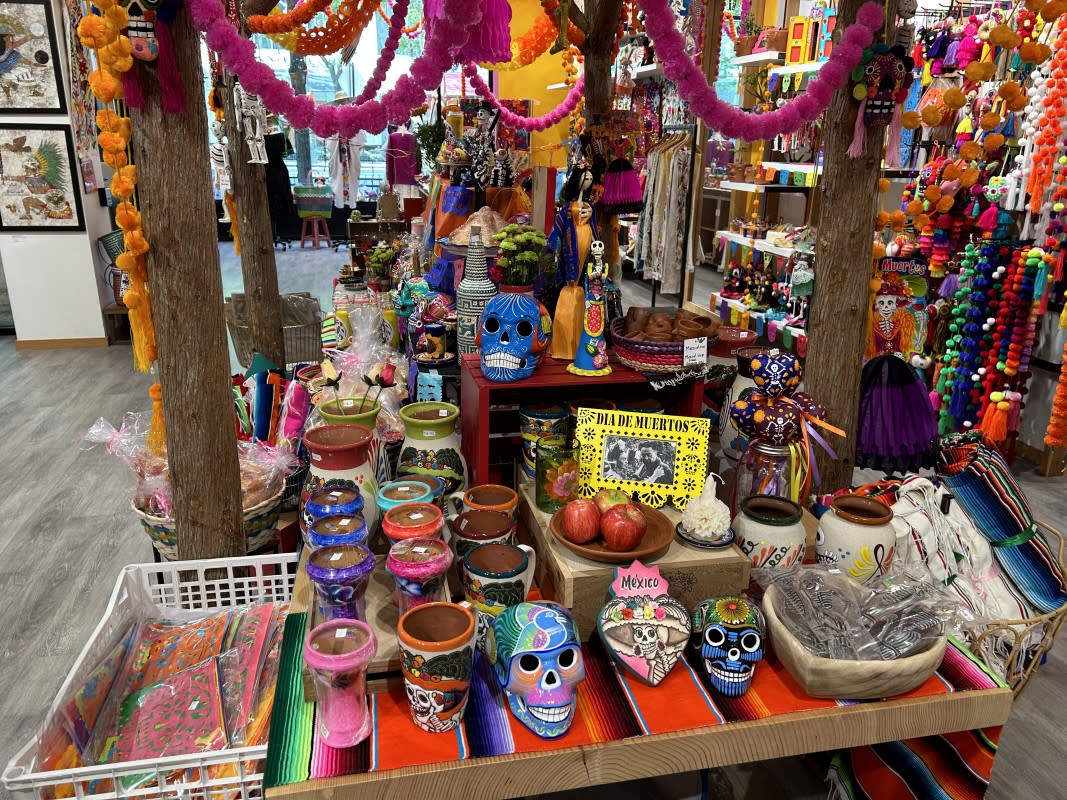
Alani Vargas/Parade
Moreno also showed us other ofrendas at the NMMA’s Día de Muertos, Living Presence exhibition that show how creative this tradition can be. One was created by the family of Guadalupe Jiménez, co-founder of the popular Chicagoland grocery store, Carnicerias Jimenez. She died this past year, and her family created an ofrenda for the museum that honored Guadalupe Jiménez and her store, along with her love of Christmas, showing you can make your ofrenda as unique or different as you’d like. You can see it in the video above.
Another ofrenda was created by the family of Myrna Salazar, a “theater icon” in Chicago who also died within the past year. She was Puerto Rican, not Mexican, showing how universal Day of the Dead can be.
“That's one of the beautiful things about Day of the Dead is it's very malleable,” Moreno says. “You can make it your own, right? You don't have to be Mexican. You don't have to be Christian. You don't have to be anything. You can honor the people you love that are no longer with us. You can honor them and grieve them and celebrate their life in your own way. And in Mexico, it's done in the form of an altar in the home.”
For Nelo, the pride Mexicans have in themselves and their culture is important. Aguiñaga-Martínez helps translate a bit more, saying the Nelo is honored to show the world his traditions and very proud of how much interest and knowledge around Mexican culture has grown. He loves his culture and is passionate about sharing it with others.
“I believe that, in the sense of Mexican culture, most Mexicans are very proud to show the world what our country, our land, is,” Nelo says.
Sources:
Erika Espinosa: Erika Espinosa is the co-owner and co-founder of Colores Mexicanos, a Mexican gift shop full of goodies straight from Mexico. Located on Michigan Ave in Chicago, IL, the store also has a lot of important art and handcrafted items from Mexican artisans. She runs the popular Mag Mile storefront with her sister Leti Espinosa and their business partner, Gabriel Neely-Streit.
Cesáreo Moreno: Cesáreo Moreno is the Visual Arts Director and Chief Curator at the National Museum of Mexican Art, located in Chicago, IL. He’s worked there since 1992. He’s also curated 10 of the museum’s annual Day of the Dead exhibitions.
Alejandro García Nelo: Alejandro García Nelo is from Valle de Bravo, Mexico, and the artist of “54,950 heartbeats,” a tribute to the victims of the earthquakes in Turkey, Syria and Morocco, the first ofrenda installation in NMMA’s 2023 Day of the Dead exhibit. He’s created a handful of ofrenda art installations for the museum since 1995.
Raquel Aguiñaga-Martínez: Raquel Aguiñaga-Martínez is the museum Registrar and helped with translating our conversation with Nelo.
